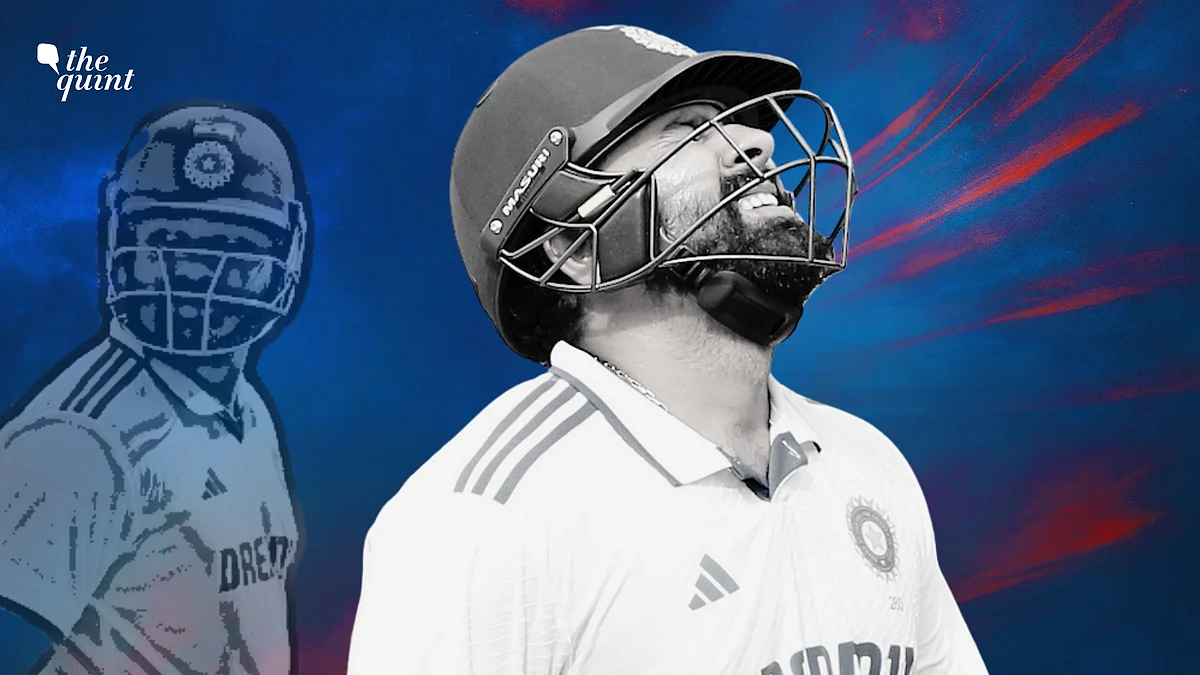Rohit Sharma Retires From Test: A ‘Could Have Been’ Tale of Unrealised Potential
At 38, unfortunately, Rohit Sharma's best was behind him, and his tale in Test will be of what could have been.

advertisement
Matches — 110
Runs — 8796
Centuries — 21
Half-centuries — 42
If someone told you these are the figures that Rohit Sharma, the Test cricketer, would end up with when he made a rollicking start to red-ball cricket with twin centuries against West Indies in 2013, it wouldn't need a lot of convincing.
Alas! When the Indian captain announced his retirement from Test cricket with an unassuming social media post, his Test stats stood at around half of these numbers.
Matches — 67
Runs — 4301
Centuries — 12
Half-centuries — 18
A Tale of Unrealised Potential
The unadulterated truth is that despite all the skill and panache that Rohit Sharma possessed, he wasn't able to fully realise his potential in Test cricket. Having started with a bang with an average of 66.60 on his debut year in 2013, he only came into his own by 2019 when the batsman was promoted at the top of the order by the dynamic duo of captain Virat Kohli and head coach Ravi Shastri.
Despite that, Rohit was averaging 45.46 at the start of the 2024-25 season. His Test career nosedived from there on as the batter was able to score only one half-century in his last 15 innings that included a 2-0 series win against Bangladesh, a historic 0-3 whitewash at home against New Zealand, and a disappointing 1-3 defeat to Australia Down Under.
Retirement Was Not Out of the Blue
Rohit's retirement, however, doesn't come entirely out of the blue. Opportunities in Test cricket are far and few in between, given the rise in the number of ICC events and the insane amount of T20 cricket, both International and franchise, squeezed into the calendar. Consequently, India does not play a home Test series till October this year.
With India slated to pick their Test squad for the England Test series soon, a nudge from the Ajit Agarkar-led selection committee for Rohit to move on can't be ruled out. With the sheer batting talent that the country continues to produce, one has to be at the top of his game to command a place in the side. Cheteshwar Pujara and Ajinkya Rahane have already been dropped from the side, while even a legendary figure like Virat Kohli might have to face the axe, if one or two more series don't go his way. In the absence of domestic cricket to prove his red-ball credentials, the option of a dignified retirement might have seemed the sensible one to Rohit.
For All It Is Worth, Rohit Flourished in Home Tests
If there is one facet of Test cricket in which Rohit Sharma flourished, it was at home. Like most batters worth their salt, he was a menace on flat tracks, but also on spinning decks, which rewarded his high-risk cricket. Rohit was one of the best at getting after the bowlers. By the time the opposition bowlers came to terms with what had hit them, India would generally be sitting at 200 after the first two sessions, and on Indian dust bowls, that was game, set and match.
There is no doubting the ability of the man, and that given another run, he could have blossomed into one of the finest Test cricketers India ever produced. Those who saw his masterful 127-run knock in the Oval Test match during the 2021 India tour of England would agree unequivocally. The patience and the batsmanship that Rohit showed during the innings were a delight for the true-blue Test cricket fans. Leaving balls outside the off stump with decisiveness and then taking a toll when the bowlers got close to him, playing with soft hands, trusting his defence, playing close to his body at all times and with a straight bat are all the basics of Test match batting that Rohit followed like it was second nature to him.
While the innings will remain one of the highlights of Rohit's Test career, it's also true that innings like these were more aberrations than the norm, and at 38, unfortunate as it might sound, his best was behind him.